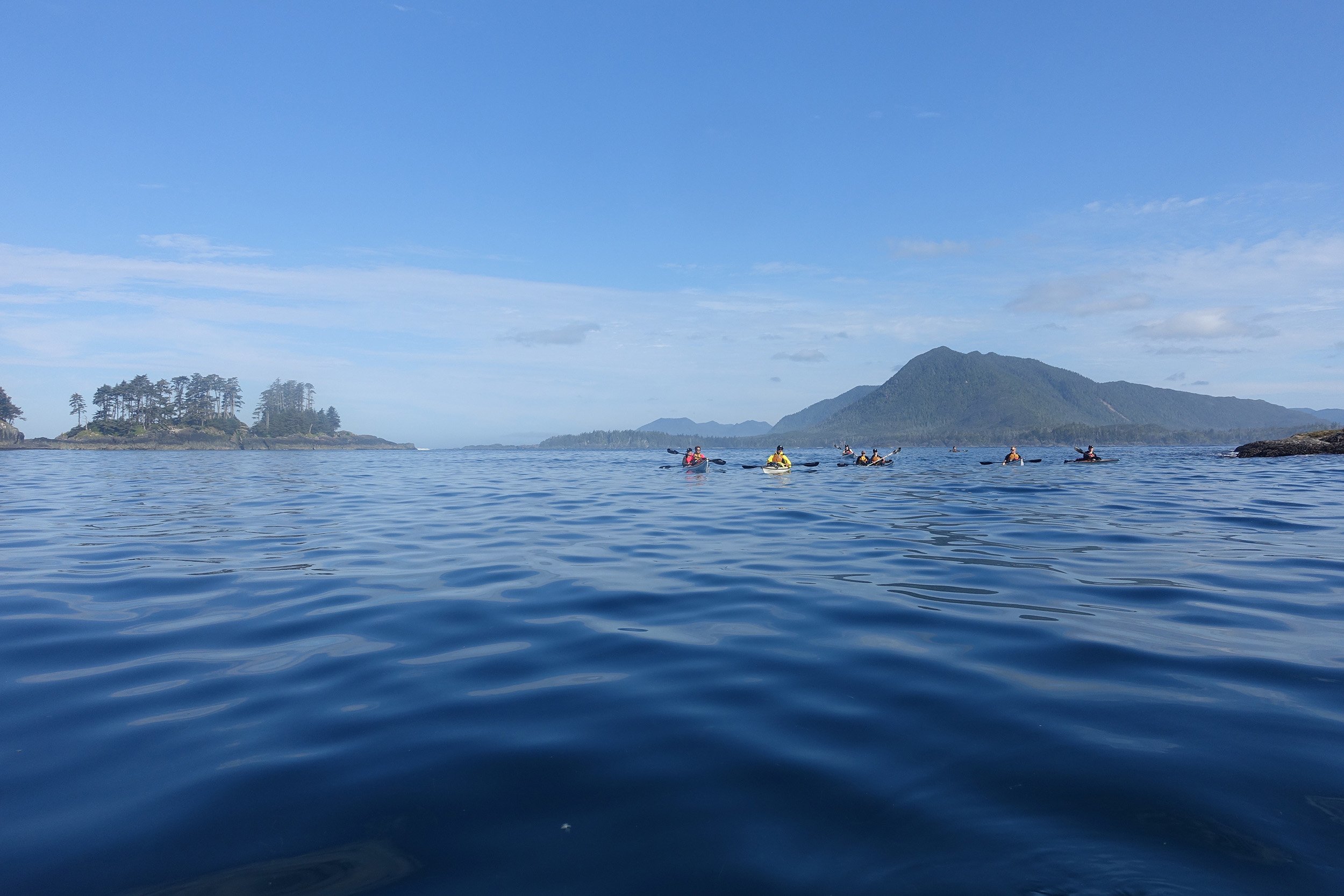ABOUT
HAIDA GWAII
Landscape
Haida Gwaii is an archipelago located off the northwest coast of British Columbia, Canada where the land meets the sea in a stunning display of nature's splendor. It’s comprised of nearly 150 islets and 2 main islands- Graham and Moresby, which support 5 small communities.
The forested islands are home to a diverse range of plant and animal life, including towering trees, verdant grasslands, and sparkling streams. The coast is dotted with sandy beaches and rocky cliffs, where the waves of the Pacific Ocean crash against the shore. In the waters surrounding the islands, a rich and diverse marine ecosystem thrives, with schools of fish swimming through the depths and pods of whales breaching the surface. The air is filled with the sound of screeching bald eagles and the smell of saltwater and pine.
Haida Gwaii is a true paradise, where the beauty of the natural world is on full display.
Despite Haida Gwaii’s northern latitude, the Pacific currents and westerly winds significantly moderate its climate making it one of Canada’s most northerly temperate rainforests. As a result, the ecology of Haida Gwaii is a tapestry of vibrant colors and diverse forms, both on land and off the coast. The archipelago is home to a wide range of plant and animal life, each with its own unique characteristics and beauty. The forests are a mosaic of green and brown, with tall trees reaching up to the sky and a carpet of ferns and mosses covering the ground. The coast is dotted with rocky outcroppings and sandy beaches, home to seals and seabirds. The waters around Haida Gwaii are teeming with life, from the smallest plankton to the largest whales. The marine ecosystem is a wonder to behold, with its kaleidoscope of colors and the endless dance of fish and other sea creatures. The ecology of Haida Gwaii is a true masterpiece, a celebration of the natural world in all its glory.
Gwaii Haanas National Park is located on Haida Gwaii and encompasses the southern portion of the archipelago. It is a protected area that preserves the natural and cultural heritage of Haida Gwaii. The park is known for its natural beauty, with forests, mountains, and beaches. It is also home to a number of species that are found nowhere else in the world. The beauty of the natural world is on full display on Haida Gwaii, making it a must-see destination for anyone interested in exploring the great outdoors.
Past to Present
Humans first reached Haida Gwaii during the last ice age, 10 to 15 thousand years ago when sea levels were hundreds of feet lower, and it was possible to walk between continental Asia and north America.
During this time the Hecate straight was a grassy expanse that connected Haida Gwaii with the mainland, and the huge coniferous trees that now dominate the landscape were only just beginning to take root. Most importantly, this was the beginning of a millennia-long relationship between the Haida people and the islands they call home.
All that passed over the following thousands of years is part of a rich oral history that belongs the Haida Nation. There are many ways that visitors can now learn about the incredible artforms and construction techniques the Haida people developed – the Kaay Centre being a great place to start.
In the late 1700s colonialism first reached the shores of Haida Gwaii, and there was a brief period of mutual prosperity between the two peoples as a new trading relationship blossomed. However, the negative impacts of colonialism soon swept over the lands with devastating results for the Haida people. Ultimately, only two Haida communities remained – Skidegate and Old Masset, which both stand to this day.
Over the last 200 hundred years several “settler” communities emerged on Haida Gwaii – Queen Charlotte (Daajing Giids), Sandspit, Port Clements and Masset. These communities revolved around 2 main commercial industries – fishing and logging – both of which have gone through boom and bust several times over.
People are now trying to re-establish a balance between resource extraction and environmental conservation - Haida and Settler communities alike. We are also trying to re-examine the past to properly reconcile the deep pain caused by colonialism. It’s a work in progress….







